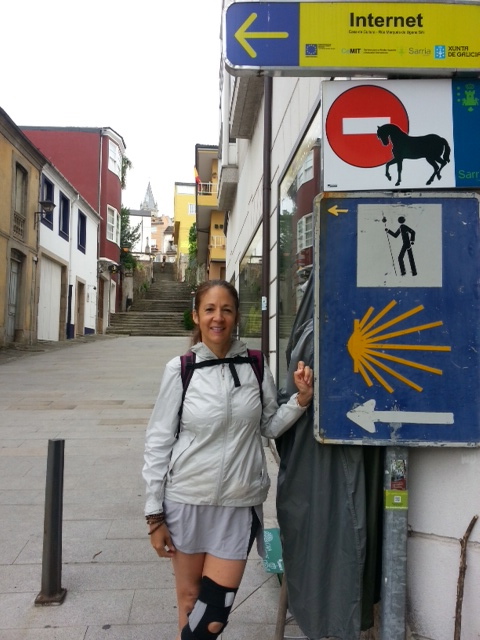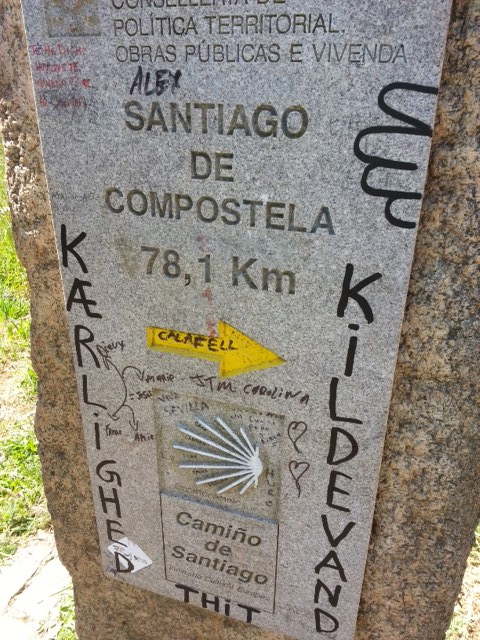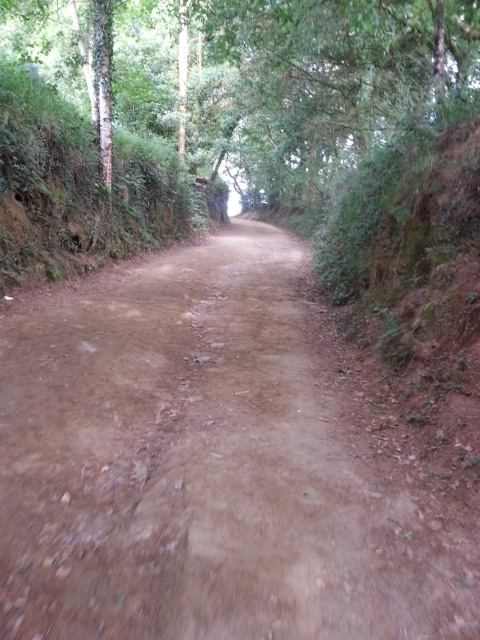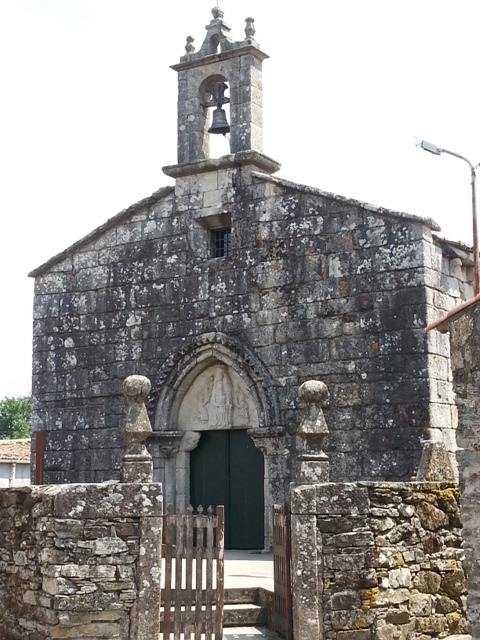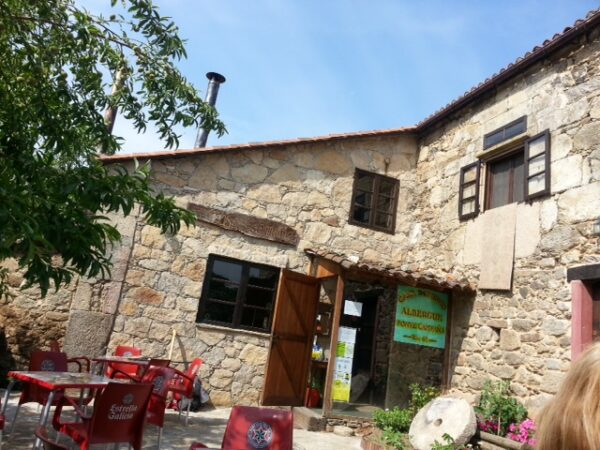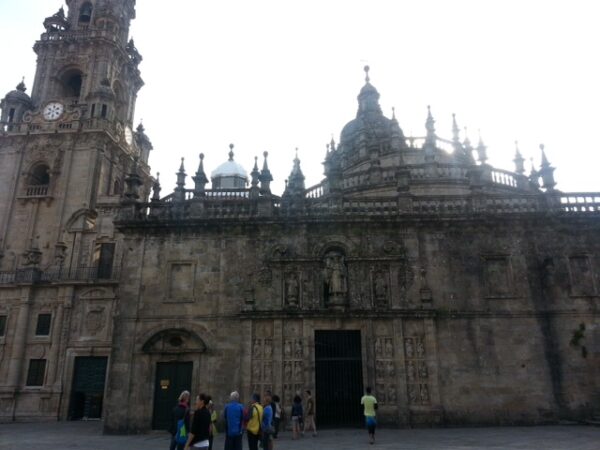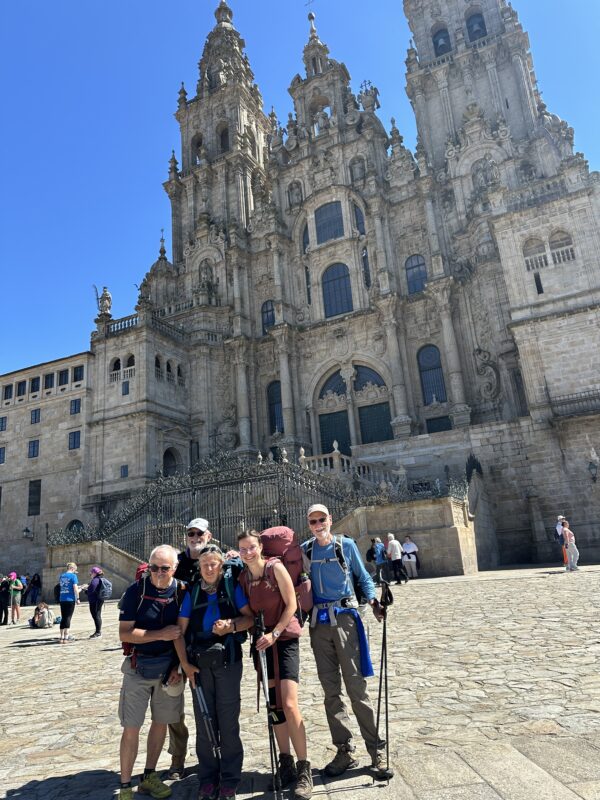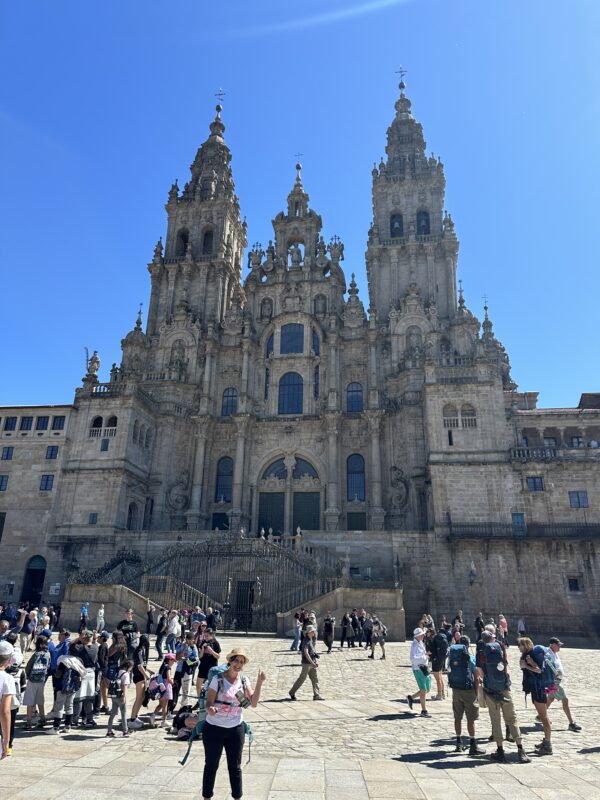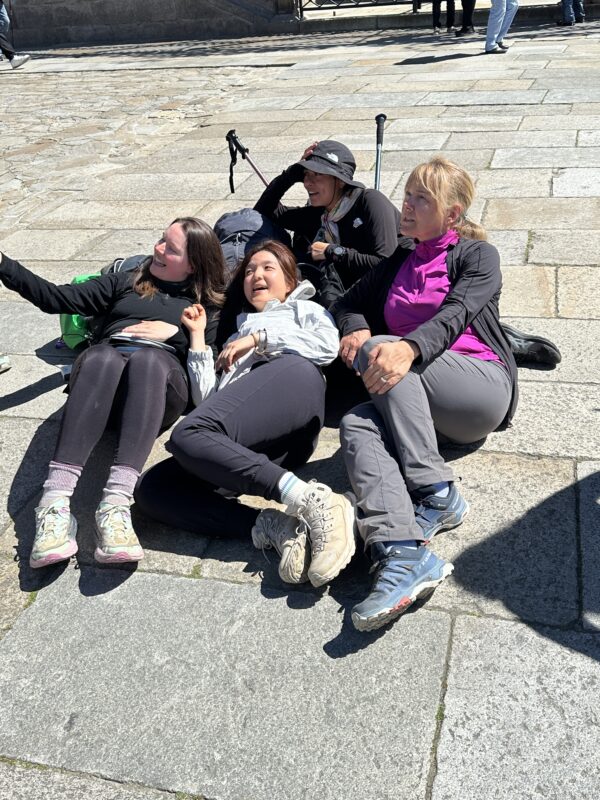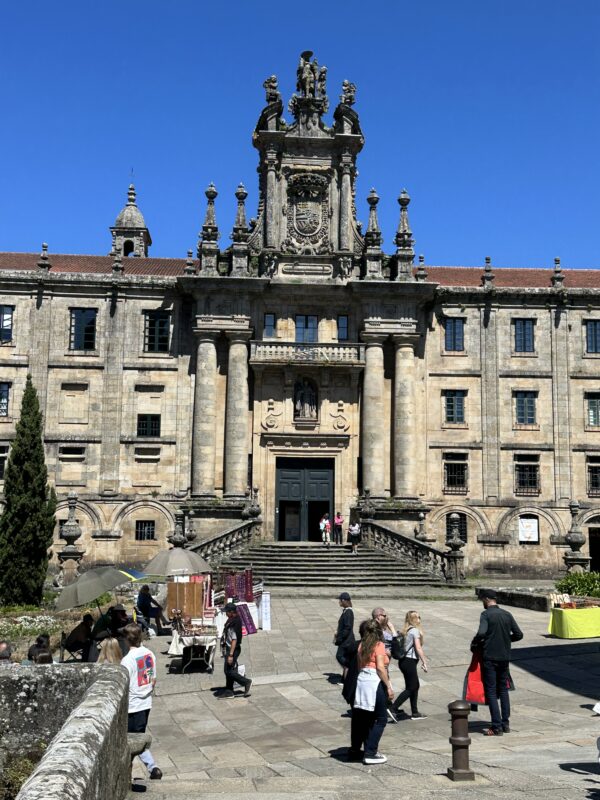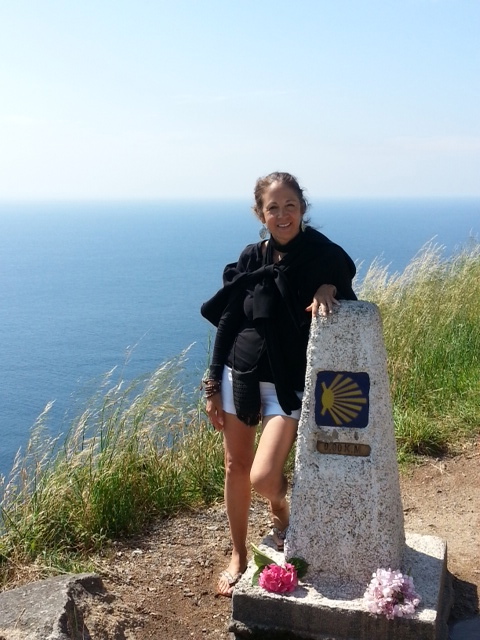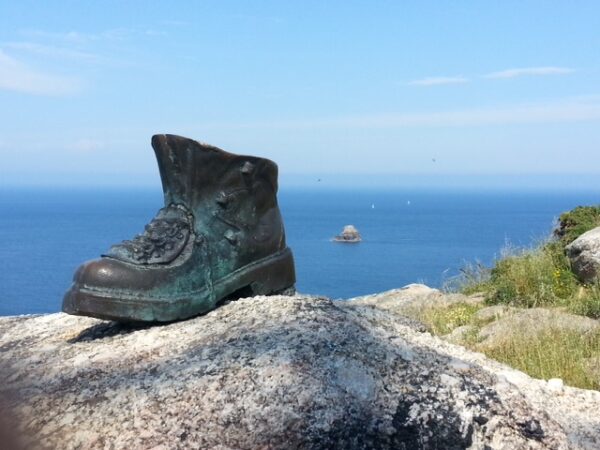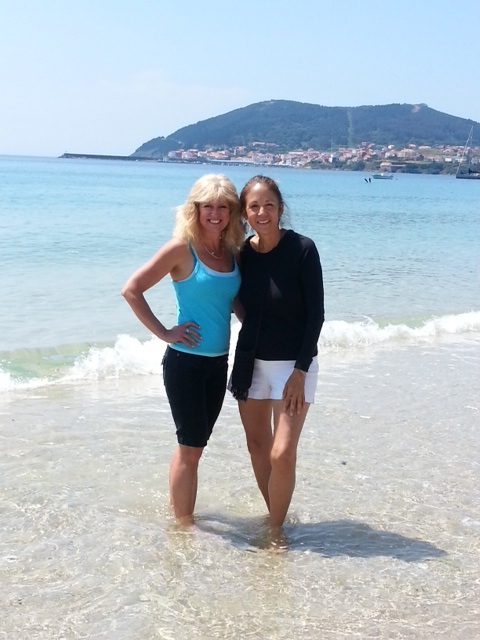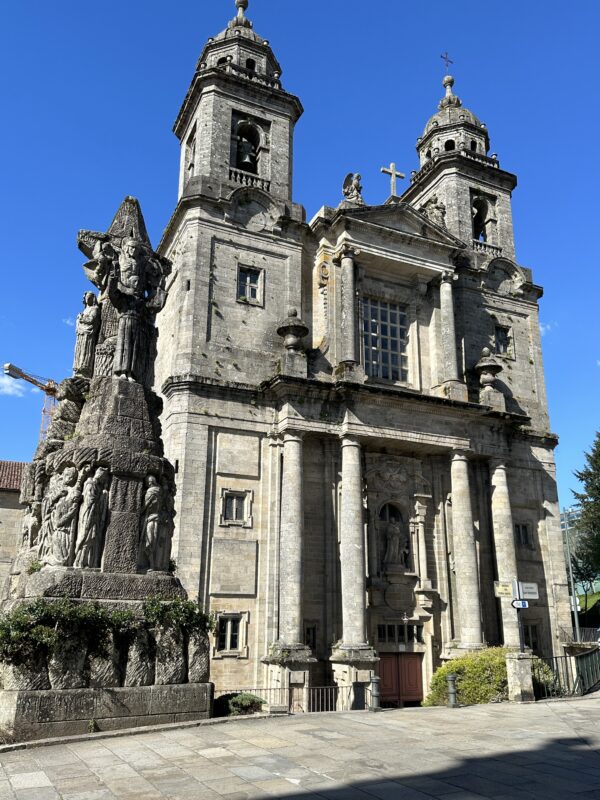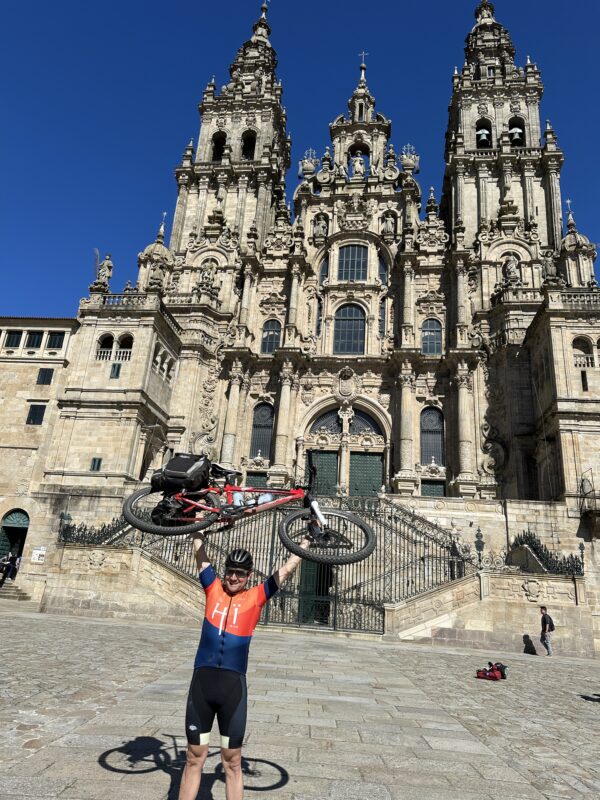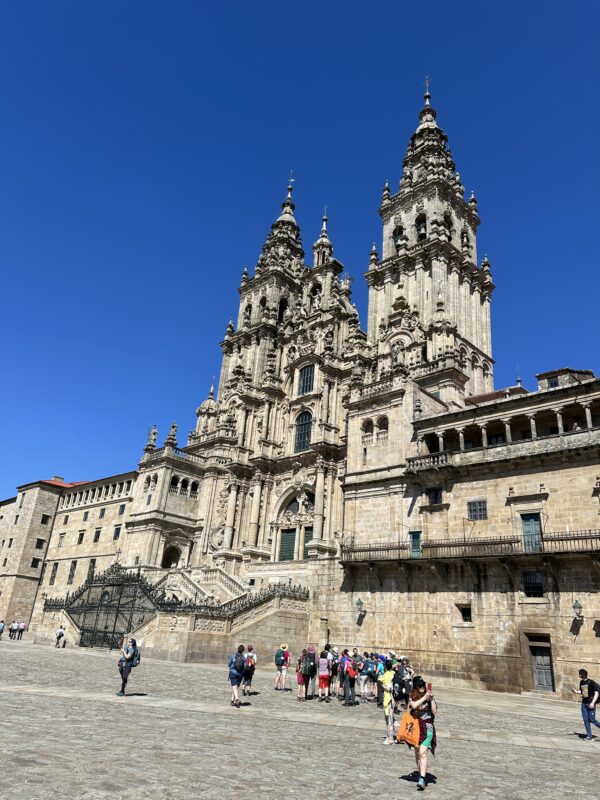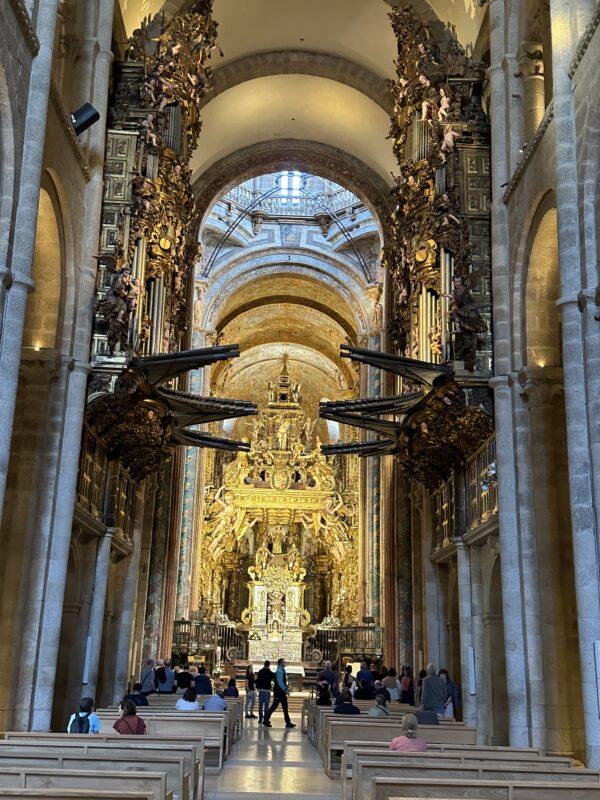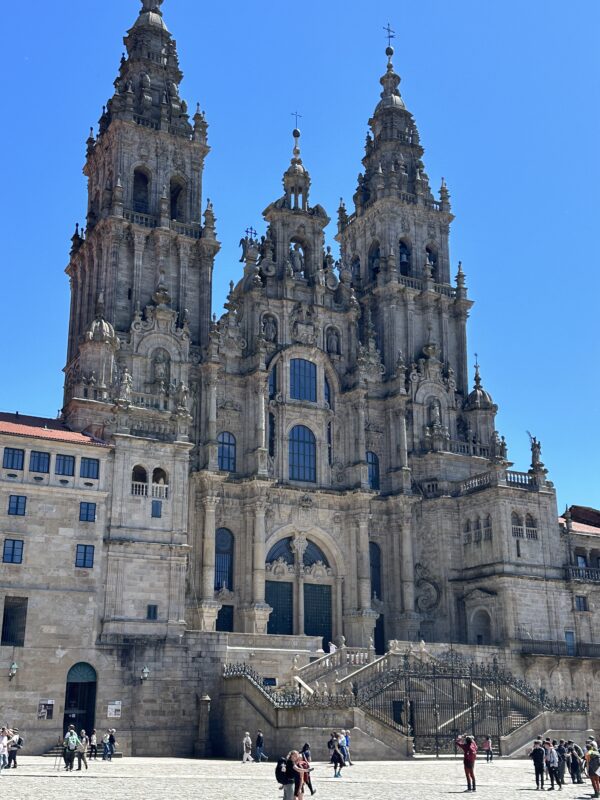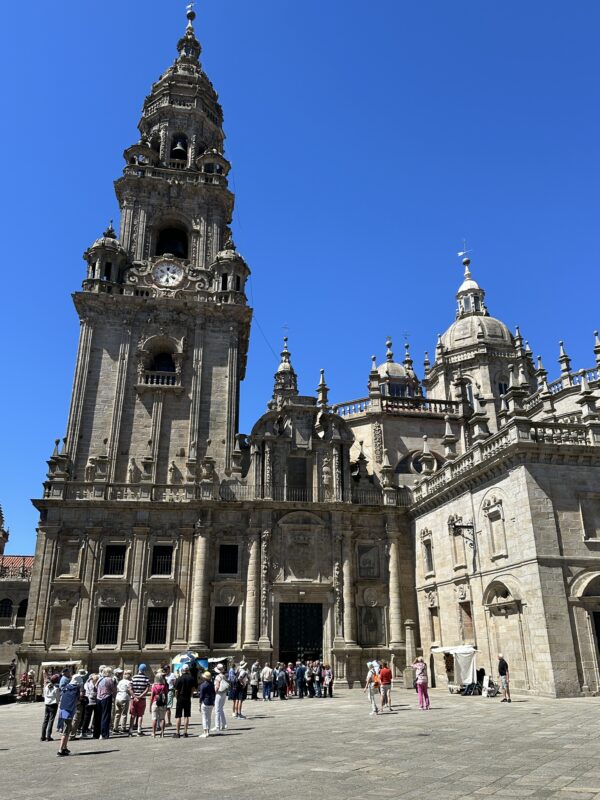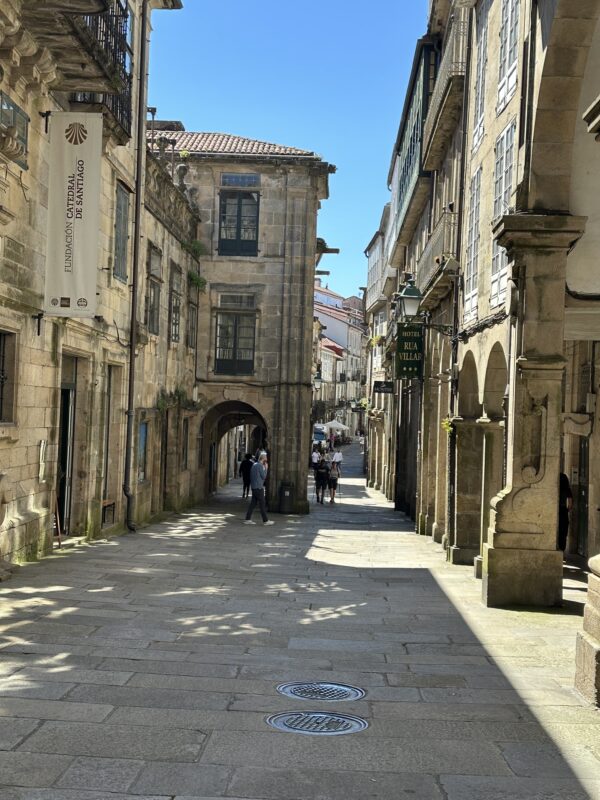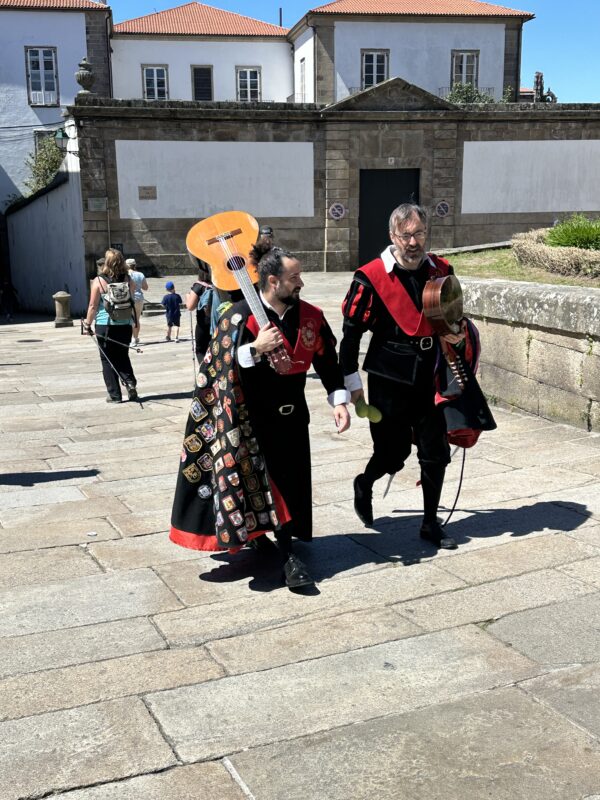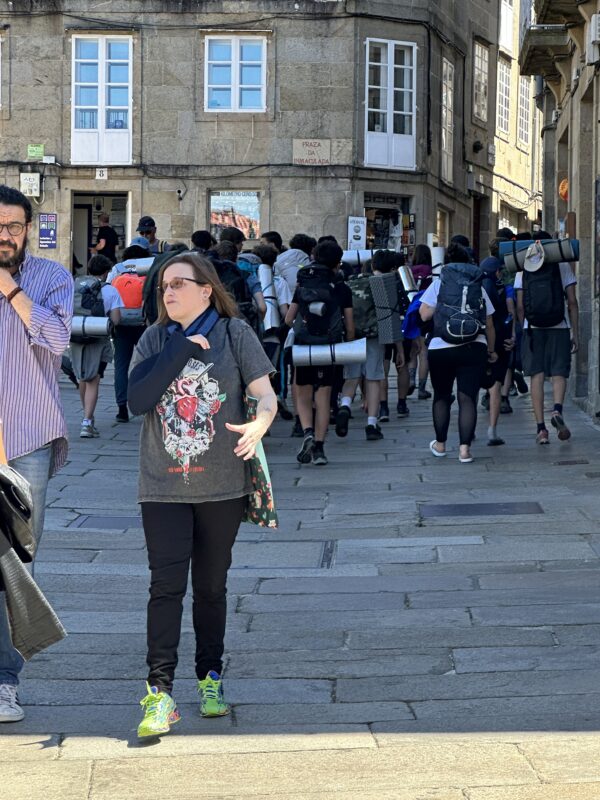Spain El Camino
Arden and I did a few miles of the El Camino in Santiago and those phots of the finishers and incredible Cathedrals and churches are at the end. The start of this post focuses on the trek done by our friend Marie (below) and her trek below. The town of Sarria marked the beginning of the trek and we trekked until we reached Santiago de Compostela. During the walk I met people from all over the world who for religious, spiritual or mere sports walk the“Camino”. The magnificent St. James Cathedral marks the end of this week long walk. A mass receives the pilgrimage walkers with a blessing spreading the incense throughout the church with the “botafumeiro” which needs eight priests to manage. This cathedral began construction on 1075 and took over 100 years to build. While at mass it brought back childhood memories when I used to go to church with my Dad very early in the morning, (mostly because I wanted to be with Dad and have hot chocolate at the end of the mass).
The Way of St. James was one of the most important Christian Pilgrimages during medieval times, together with Rome and Jerusalem, and a pilgrimage route on which a plenary indulgence could be earned
Legend holds that St. James remains were carried by boat from Jerusalem to northern Spain where he was buried on what is now the city of Santiago de Compostela
trek route
The Way can take one of dozens of pilgrimage routes to Santiago de Compostela. Traditionally, as with most pilgrimages, the Way of Saint James began at one’s home and ended at the pilgrimage site.
The pilgrimage to Santiago has never ceased from the time of the discovery of St. James’s remains, though there have been years of fewer pilgrims, particularly during European wars.
By the 1980s, only a few pilgrims per year arrived in Santiago. Later, the route attracted a growing number of modern-day pilgrims from around the globe. The route was declared the first European Cultural Route by the Council in Europe in October 1987; it was also named one of UNESCO World Heritage Sites
Church along the way above
Scallop symbol[
The scallop shell, often found on the shores in Galicia, has long been the symbol of the Camino de Santiago. Over the centuries the scallop shell has taken on mythical, metaphorical and practical meanings, even if its relevance may actually derive from the desire of pilgrims to take home a souvenir.
Two versions of the most common myth about the origin of the symbol concern the death of St. James , who was Martyred by beheading in Jerusalem in 44 CE. According to Spanish legends, he had spent time preaching the gospel in Spain, but returned to Judaea upon seeing a vision of the Virgin Mary
Version 1: After James’s death, his disciples shipped his body to the Iberian Peninsula to be buried in what is now Santiago. Off the coast of Spain, a heavy storm hit the ship, and the body was lost to the ocean. After some time, however, it washed ashore undamaged, covered in scallops.
Version 2: After James’s death his body was mysteriously transported by a crewless ship back to the Iberian Peninsula to be buried in what is now Santiago. As the ship approached land, a wedding was taking place on shore. The young groom was on horseback, and on seeing the ship approaching, his horse got spooked, and horse and rider plunged into the sea. Through miraculous intervention, the horse and rider emerged from the water alive, covered in seashells.
The scallop shell also acts as a metaphor. The grooves in the shell, which meet at a single point, represent the various routes pilgrims traveled, eventually arriving at a single destination: the tomb of James in Santiago de Compostela. The shell is also a metaphor for the pilgrim: As the waves of the ocean wash scallop shells up onto the shores of Galicia, God’s hand also guides the pilgrims to Santiago.[
Modern-day pilgrimage[
A place to stay above
The modern symbol of the way
Today, tens of thousands of Christian and many others set out each year from their front doorsteps or from popular starting points across Europe, to make their way to Santiago de Compostela. Most travel by foot, some by bicycle, and a few travel as some of their medieval counterparts did, on horseback or by donkey . In addition to those undertaking a religious pilgrimage, the majority are hikers who walk the route for non-religious reasons: travel, sport, or simply the challenge of weeks of walking in a foreign land. Also, many consider the experience a spiritual adventure to remove themselves from the bustle of modern life. It serves as a retreat for many modern “pilgrims”.
Cathedral above and inside below
Arden and my phots below as we walked a few miles. Others finishing the trek below and again Arden and my photos
MArie at the end below
